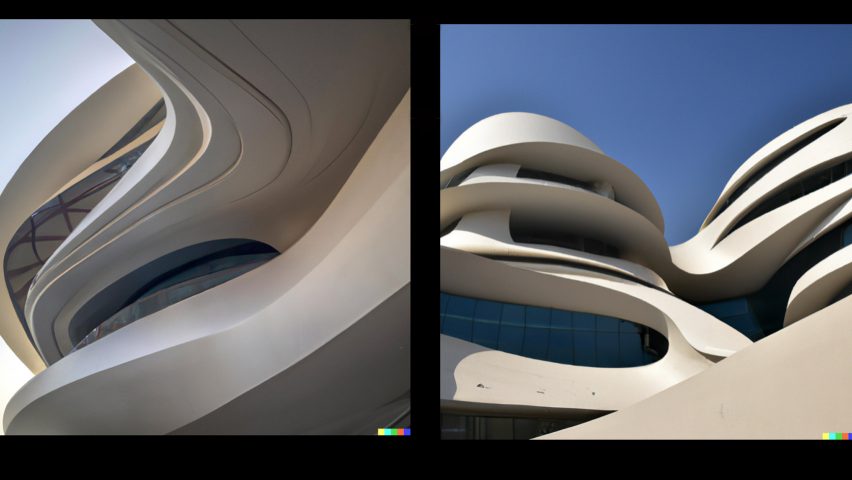
ZHA developing "most" projects using AI-generated images says Patrik Schumacher
Zaha Hadid Architects is using AI text-to-image generators like DALL-E 2 and Midjourney to come up with design ideas for projects, studio principal Patrik Schumacher has revealed.
At a recent roundtable discussion on how artificial intelligence (AI) could change design, Schumacher delivered a presentation about Zaha Hadid Architects' (ZHA) use of image-generating technology.
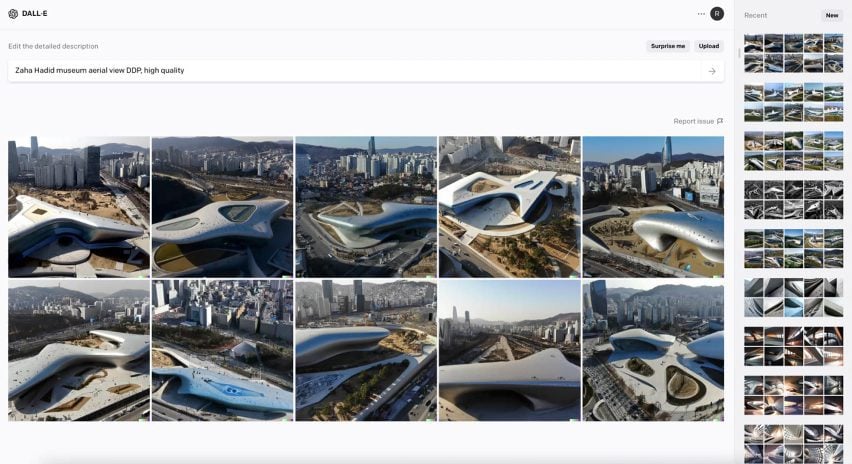
"Not every single project is using it but let's say most – I'm encouraging everybody who's working on competitions and early ideation to see what comes up and just to have a larger repertoire," he said.
"And oftentimes they have interesting ideas and new kinds of form and moves and you can show them as early sketches even to clients – and yes, we got called out sometimes recently about that."
"You don't even have to do much, you show them raw and you can generate ideas with clients and within the team, because of light, shadow, geometry, coherency, the sense of gravity and order is so potent and the ideas are still striking."
The architect showed an extensive catalogue of images of imaginary buildings created using DALL-E 2, Midjourney and Stable Diffusion bearing the studio's signature fluid, sinewy style made famous by its founder, the late Zaha Hadid.
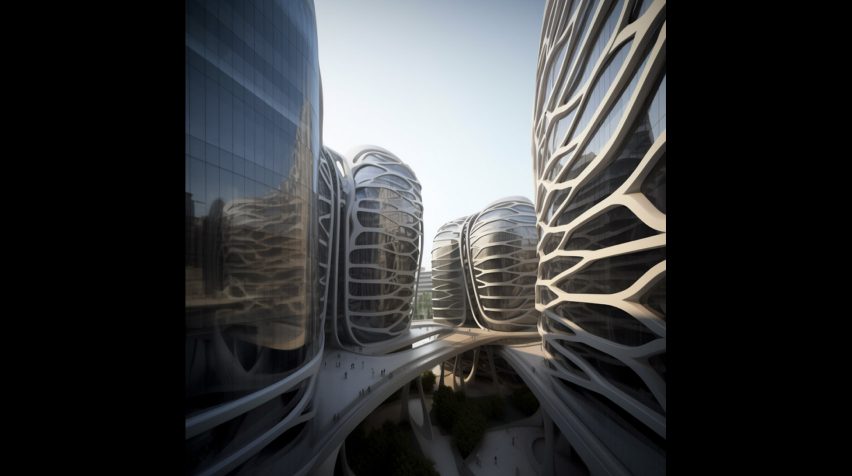
Prompts shown alongside the images included "Zaha Hadid museum aerial view DDP [Dongdaemun Design Plaza], high quality" and "Zaha Hadid eye level view, high quality".
"Nearly all of them have 'Zaha Hadid' in the prompting with various sorts of attributes and programmatic suggestions, etcetera," Schumacher explained.
"I accept all of that into our oeuvre. Any of what comes out of this, I claim authorship for it in terms of validating, selecting, elaborating. So I feel very kind of empowered by all this possibility."
Online AI tools such as DALL-E 2 generate an image in seconds from text prompts. Since emerging within the last year they have gained huge attention and sparked a debate about how AI could upend the creative industries.
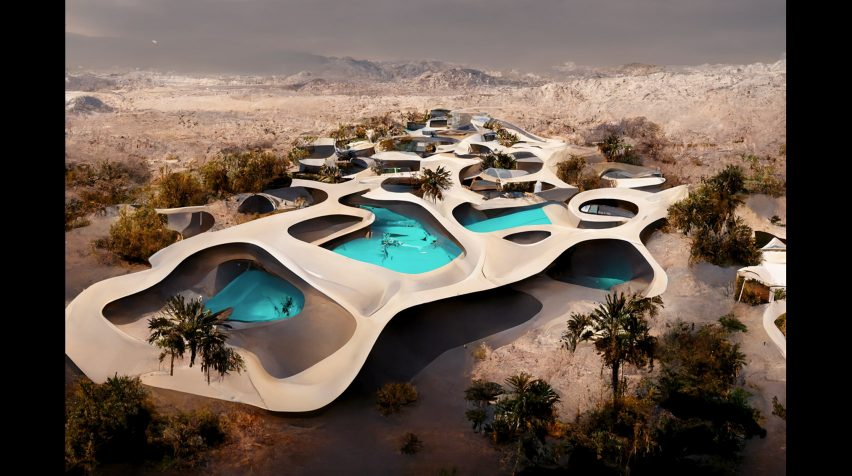
This month, the winner of a Sony World Photography Award revealed that his haunting black-and-white portrait of two women had actually been generated using DALL-E 2.
Schumacher drew a comparison between using AI text-to-image tools and conventional design meetings as a method of coming up with ideas.
"For me it's always been very similar to verbal-prompting teams, referencing prior projects and ideas and gesticulating with my hands," he said.
"That's the way of generating ideas and I can do that now directly with Midjourney or DALL-E 2, or the team can do it as well on our behalf, and so I think that's quite potent."
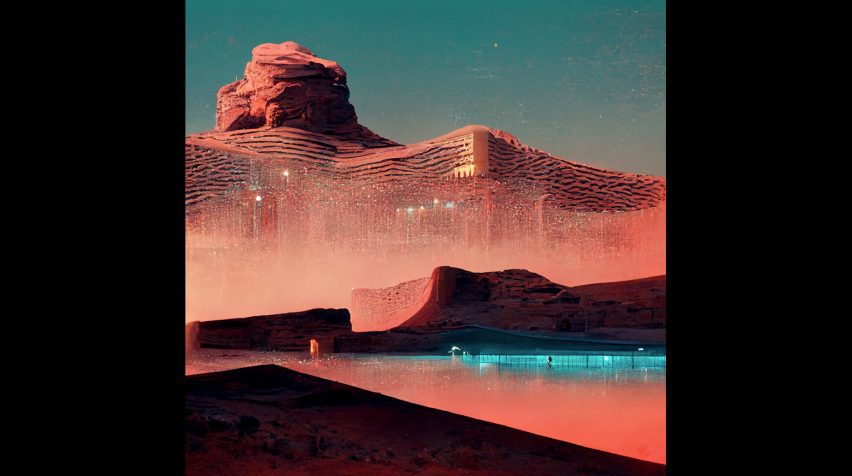
Among the AI-generated images he presented were designs for potential projects in Neom, the controversial mega-development in Saudi Arabia.
He outlined how the studio selects around "10 to 15 per cent" of the output from the AI image generators to take forward to the 3D modelling phase.
"These things are so coherent and they're so kind of meaningful that it's easy to model them because they have that three-dimensional implied coherency," Schumacher said.
Zaha Hadid Architects, which is one of the largest architecture firms in the UK and among the world's highest-profile, has set up an internal AI research group, he added.
During a Q&A following the session, Schumacher criticised calls for a moratorium on the development of AI systems more powerful than GPT-4, a chatbot by DALL-E 2 creator OpenAI.
An open letter warning that such systems pose "profound risks to society and humanity" was signed by Elon Musk and Apple co-founder Steve Wozniak among other prominent tech industry figures.
"I plead on taking a little bit more risk for the sake of reward and investment on many levels," said Schumacher.
"So I'm not somebody who wants to have a moratorium on AI research. All these kind of heartbreaks or political – some kind of worries coming in and blocking things and stopping things, I think that would be the catastrophe."
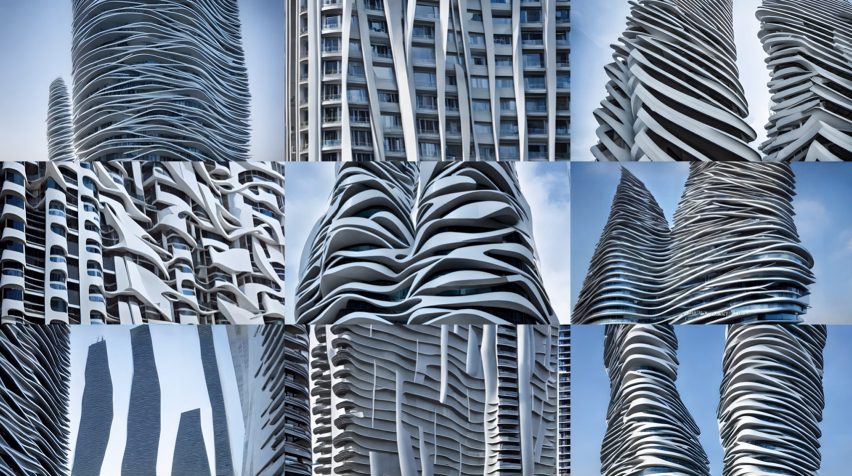
He argued that the the "serious issues" surrounding AI cannot be resolved by "heavy regulation" and instead advocated being "open and free and energised and optimistic to solve these issues".
"We can see already the forces lining up to impose centralised political controls," he added. "I don't want Congress, members of parliament, etcetera, they totally would be overburdened to deal with it, to come in and try to channel that, that's not what I believe in."
Schumacher's ardently pro-free-market, anti-regulation views are well known. In 2016 he caused consternation by calling for social housing and public space to be scrapped during a keynote speech at the World Architecture Festival.
The images are courtesy of Zaha Hadid Architects.